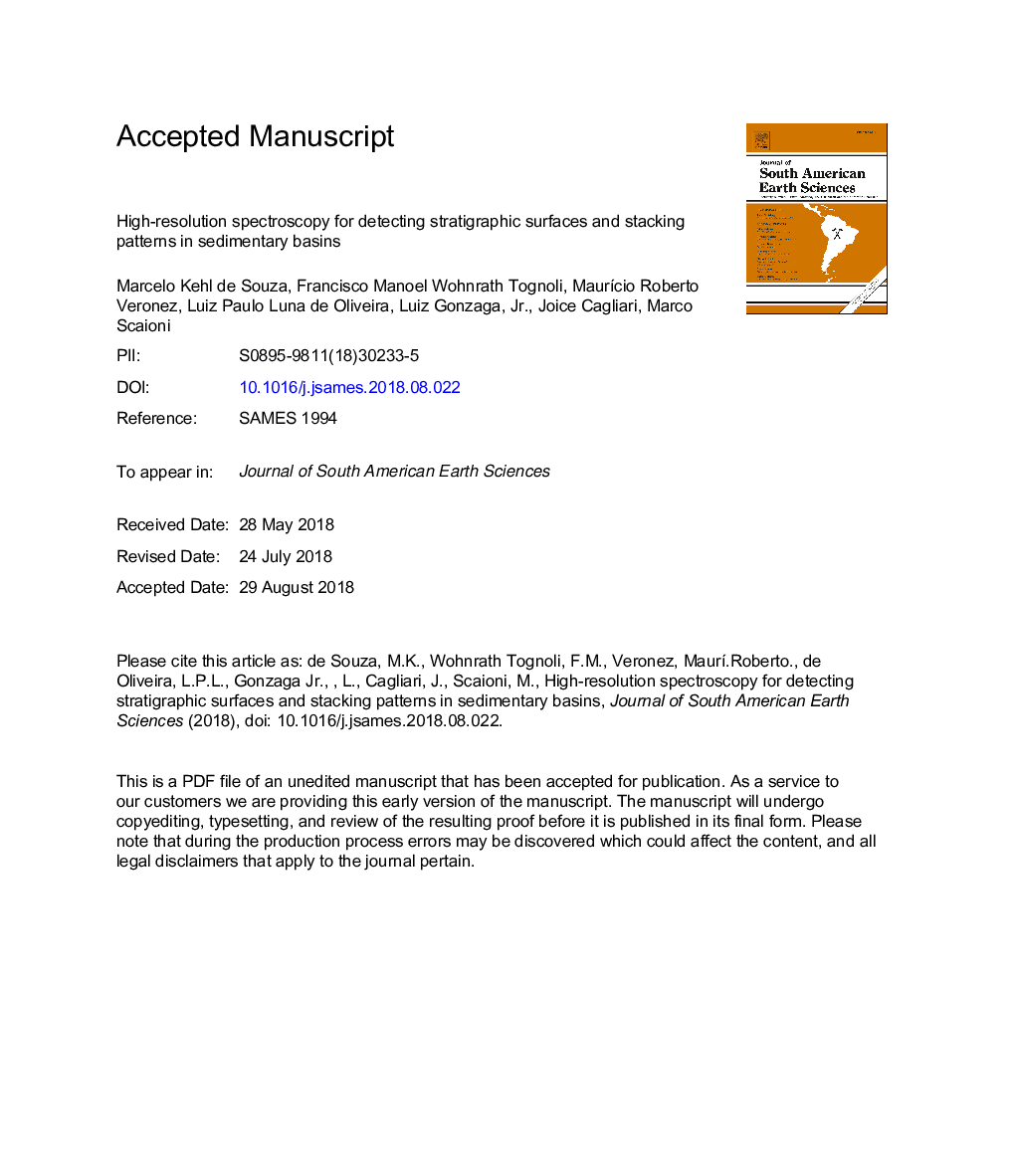| Article ID | Journal | Published Year | Pages | File Type |
|---|---|---|---|---|
| 10119917 | Journal of South American Earth Sciences | 2018 | 18 Pages |
Abstract
In this research was evaluated the potential of using scores derived from spectral data to detect surfaces and stacking patterns in the sedimentary record, and propose a new method for analyzing spectral data. Spectral field surveys with wavelengths ranging between 2.0 and 2.5â¯Î¼m were acquired from three well-exposed outcrops in the Neuquén Basin, Argentina. The sedimentary succession surveyed in this area presents a continuous exposure up to 600â¯m thick and comprises both pure and hybrid siliciclastic, carbonate and evaporitic rocks. Reflectance data obtained from this area were processed by multivariate analysis, which demonstrates that almost all of the data variance is represented by the first principal component. Inflections of the scores' derivatives can be used to identify stratigraphic surfaces and as an indicator of stacking patterns. Overall, these results demonstrate that fast, inexpensive and non-destructive spectral data are useful tools in the fields of sedimentology and stratigraphy, which have the potential to eventually support more complex and detailed hyperspectral stratigraphy research.
Related Topics
Physical Sciences and Engineering
Earth and Planetary Sciences
Earth and Planetary Sciences (General)
Authors
Marcelo Kehl de Souza, Francisco Manoel Wohnrath Tognoli, MaurÃcio Roberto Veronez, Luiz Paulo Luna de Oliveira, Luiz Jr., Joice Cagliari, Marco Scaioni,
